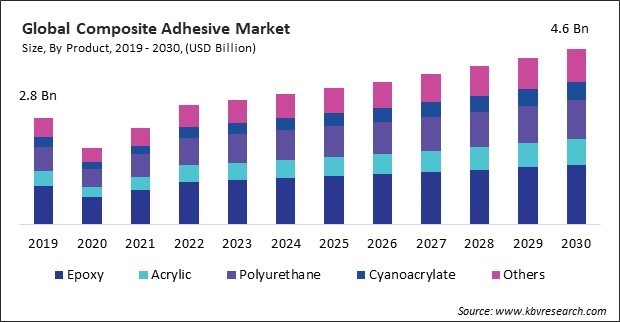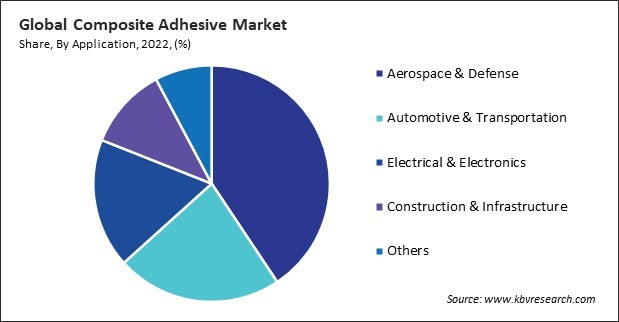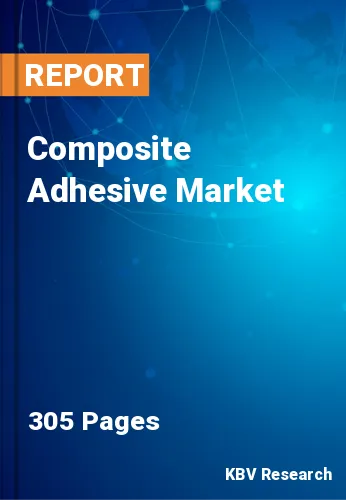“Global Composite Adhesive Market to reach a market value of USD 4.6 Billion by 2030 growing at a CAGR of 5%”
The Global Composite Adhesive Market size is expected to reach $4.6 billion by 2030, rising at a market growth of 5.0% CAGR during the forecast period. In the year 2022, the market attained a volume of 876.64 Kilo Tonnes, experiencing a growth of 3.8% (2019-2022).
The Asia Pacific region, with its booming manufacturing and automotive sectors, has witnessed a growing demand for lightweight materials. Therefore, the Asia Pacific segment captured $717.27 million revenue in the market in 2022. Composite adhesives play a crucial role in bonding lightweight composite materials, which are increasingly used in automotive, aerospace, and construction industries. Therefore, these factors will fuel the demand in the segment.

The aerospace and automotive industries constantly strive to enhance fuel efficiency and reduce overall weight. Composite materials, known for their high strength-to-weight ratio, provide an effective solution. Vehicles and aircraft can achieve better fuel economy by incorporating lightweight composites without compromising structural integrity. Composite materials, when properly bonded using advanced adhesives, contribute to the structural integrity of components. The bonding process enhances the load-bearing capacity of composite structures, making them suitable for critical applications in aircraft wings, fuselages, automotive chassis, and other components. Moreover, composite materials offer greater design flexibility than traditional materials like metals. Additionally, Typical composite materials for constructing wind turbine blades include fiberglass and carbon fiber-reinforced polymers (CFRP). These materials are selected compared to conventional materials such as steel due to their superior strength, durability, and comparatively lightweight. Due to their exceptional strength-to-flexibility ratio, composite materials are ideally adapted for the demanding and dynamic environments that wind turbine blades encounter. They are also corrosion-resistant, which is crucial for the longevity and performance of the blades. Moreover, composite materials give designers greater flexibility in shaping the wind turbine blades. As a result, these factors will lead to increased demand for these products in the future.
However, it relies on specialty resins, including epoxy, polyurethane, or other advanced polymers. Fiberglass or carbon fibre are examples of reinforcing fibres that improve the strength and other mechanical properties of an adhesive. These specialty components contribute to the overall cost. Manufacturers often use high-quality and engineered raw materials to ensure the desired performance characteristics. These materials undergo specific processes and treatments to meet the stringent requirements of various applications, particularly in industries like aerospace and automotive. Moreover, developing advanced composite adhesive formulations requires research and development efforts to optimize performance, durability, and other properties. These costs and the costs associated with obtaining and testing specialized raw materials contribute to the overall expense. The production of these may not always reach the same economies of scale as conventional adhesive technologies. Hence, these aspects can limit the growth of the market.
On the basis of application, the market is divided into automotive & transportation, aerospace & defense, electrical & electronics, construction & infrastructure, and others. The aerospace and defense segment recorded the maximum revenue share in the market in 2022. The aerospace industry places a high premium on weight reduction to enhance fuel efficiency and overall performance. These offer a lightweight alternative to traditional joining methods like mechanical fasteners, contributing to the development of fuel-efficient aircraft. As fuel costs and environmental concerns continue to influence the industry, their demand has increased. Thus, the segment will witness increased demand in the coming years.

Based on product, the market is segmented into acrylic, epoxy, polyurethane, cyanoacrylate, and others. In 2022, the polyurethane segment garnered a significant revenue share in the market. Polyurethane adhesives exhibit exceptional versatility, adhering well to various materials, including metals, plastics, composites, and wood. This versatility makes them suitable for various applications across different industries, contributing to their growing market demand. Therefore, the segment will expand rapidly in the coming years.
Free Valuable Insights: Global Composite Adhesive Market size to reach USD 4.6 Billion by 2030
By region, the market is segmented into North America, Europe, Asia Pacific, and LAMEA. The North America segment garnered a significant revenue share in the market in 2022. North America, particularly the United States, is a major hub for the aerospace and defense industry. These play a crucial role in the manufacturing and assembly of aircraft components, where lightweight and high-strength materials are essential. The growth in this sector can drive their demand. As a result, the segment will grow rapidly in the upcoming years.
| Report Attribute | Details |
|---|---|
| Market size value in 2022 | USD 3.1 Billion |
| Market size forecast in 2030 | USD 4.6 Billion |
| Base Year | 2022 |
| Historical Period | 2019 to 2021 |
| Forecast Period | 2023 to 2030 |
| Revenue Growth Rate | CAGR of 5% from 2023 to 2030 |
| Quantitative Data | Volume in Kilo Tonnes, Revenue in USD Billion, and CAGR from 2019 to 2030 |
| Number of Pages | 305 |
| Number of Tables | 590 |
| Report coverage | Market Trends, Revenue Estimation and Forecast, Segmentation Analysis, Regional and Country Breakdown, Porter’s 5 Forces Analysis, Company Profiling, Companies Strategic Developments, SWOT Analysis, Winning Imperatives |
| Segments covered | Product, Application, Region |
| Country scope |
|
| Companies Included | 3M Company, Arkema S.A., The Dow Chemical Company, Henkel AG & Company, KGaA, H.B. Fuller Company, Huntsman Corporation, Illinois Tools Works, Inc., BASF SE, Parker Hannifin Corporation, Sika AG |
By Product (Volume, Kilo Tonnes, USD Billion, 2019-2030)
By Application (Volume, Kilo Tonnes, USD Billion, 2019-2030)
By Geography (Volume, Kilo Tonnes, USD Billion, 2019-2030)
This Market size is expected to reach $4.6 billion by 2030.
Increasing demand in aerospace and automotive industries are driving the Market in coming years, however, High cost of raw materials for composite adhesives restraints the growth of the Market.
3M Company, Arkema S.A., The Dow Chemical Company, Henkel AG & Company, KGaA, H.B. Fuller Company, Huntsman Corporation, Illinois Tools Works, Inc., BASF SE, Parker Hannifin Corporation, Sika AG
In the year 2022, the market attained a volume of 876.64 Kilo Tonnes, experiencing a growth of 3.8% (2019-2022).
The Epoxy segment is generating the highest revenue in the Market, by Product in 2022; there by, achieving a market value of $1.6 Billion by 2030.
The Asia Pacific region dominated the Market, by Region in 2022, and would continue to be a dominant market till 2030; there by, achieving a market value of $2.2 Billion by 2030.
Our team of dedicated experts can provide you with attractive expansion opportunities for your business.

 Drivers
Drivers
 Restraints
Restraints
 Opportunities
Opportunities
 Challenges
Challenges
